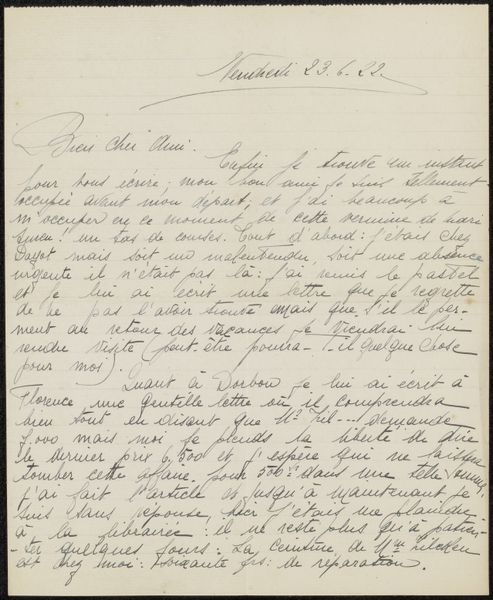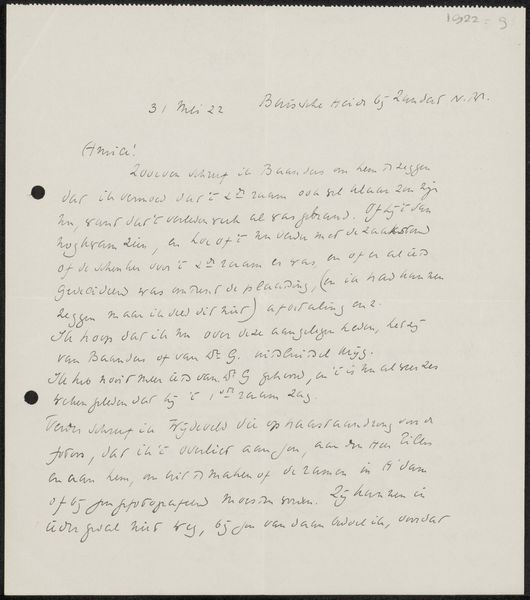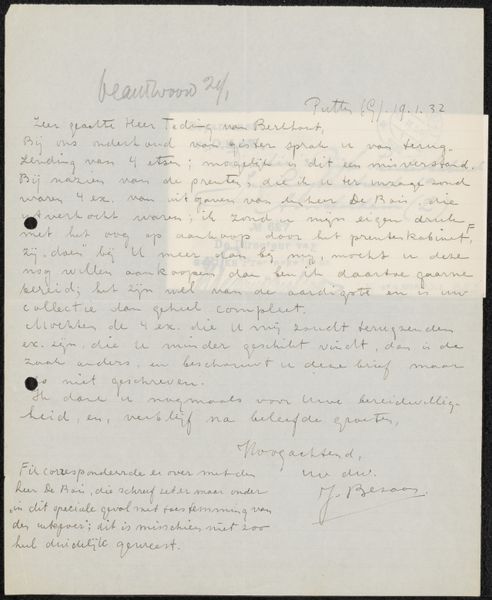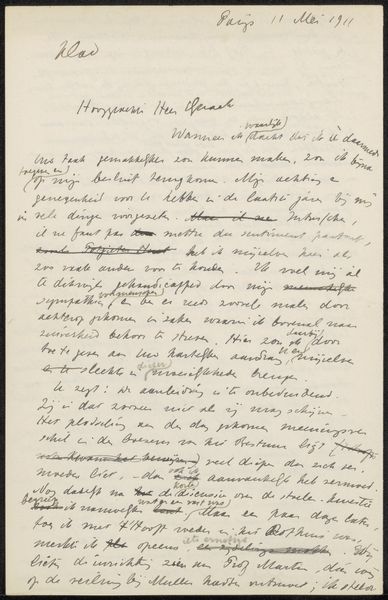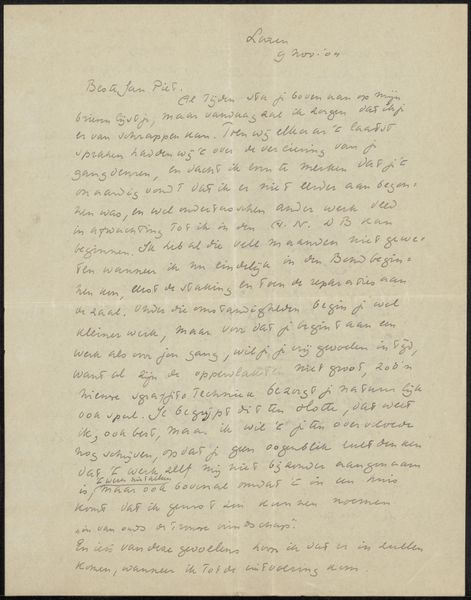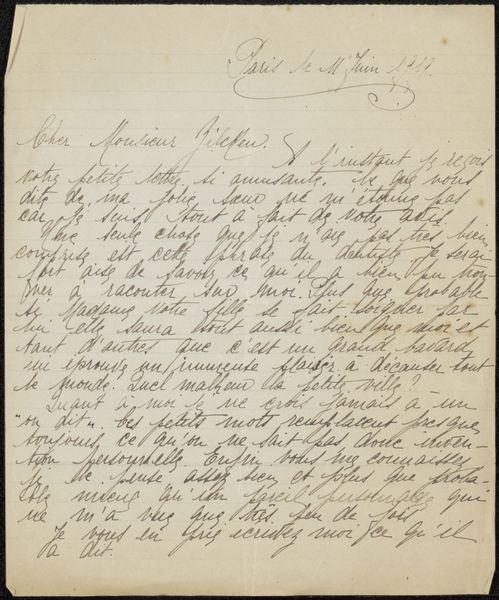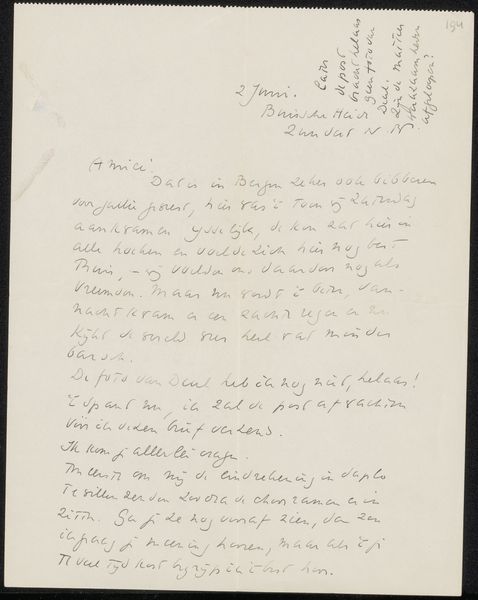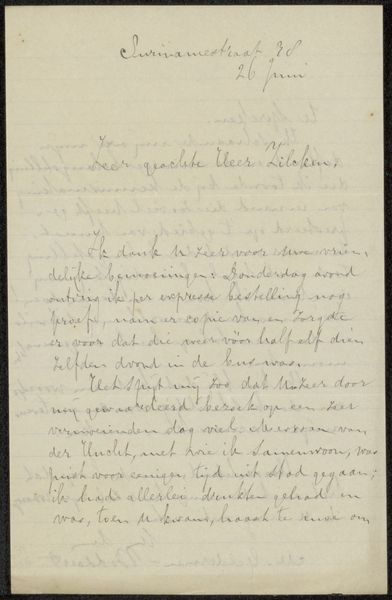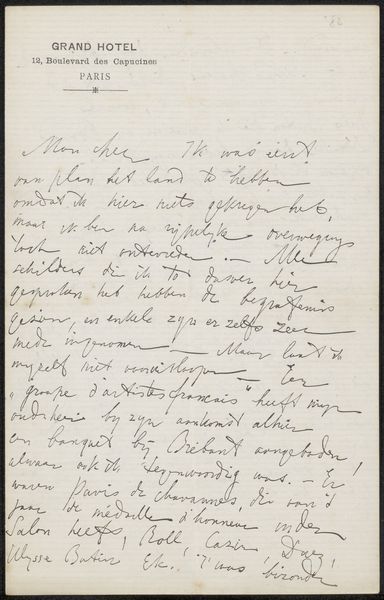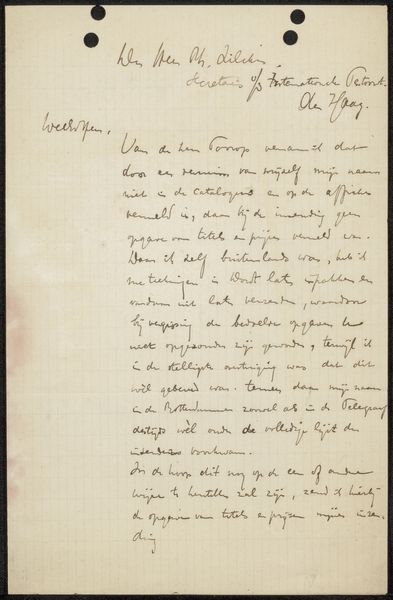
Brief aan jonkheer Hendrik Teding van Berkhout (1879-1969) Possibly 1932
0:00
0:00
drawing, paper, ink
#
drawing
#
paper
#
ink
Copyright: Rijks Museum: Open Domain
Editor: Here we have a piece titled "Brief aan jonkheer Hendrik Teding van Berkhout (1879-1969)" possibly from 1932, by Frederika Henriëtte Broeksmit. It's rendered in ink on paper. My first impression is one of delicate precision, it really displays the intimacy that comes from holding such an object. Curator: Precisely. Note the careful construction of the letter, both as a textual document and a visual composition. The flow of the handwritten script creates a rhythm across the page, anchoring to what must be carefully measured margins. Editor: The material aspects speak volumes. We see the ink bleeding ever so slightly into the paper, offering us the touch and feel that this was a practical and functional medium. Think about the texture of the paper itself, and how that influenced Broeksmit’s technique and ultimately this letter’s reception. Curator: The letterform becomes more than mere communication; it's an aesthetic expression in itself. Each character is carefully shaped. This considered calligraphic rendering creates an artful tension, elevating the personal communication to an art object, something with great intention beyond just functionality. Editor: I think that is an insightful analysis. The texture inherent in this handwritten method gives us the personal and warm perspective that connects with its utility and history. We're getting a clear view of Frederika Broeksmit's labour, care and personality that were instrumental in the letter’s creation. Curator: Considering the visual language in this context helps understand what the author is highlighting and what it meant to represent her intentions as a formal mode. The composition emphasizes Broeksmit’s internal thought process— a sort of architectural display on the material surface of the paper itself. Editor: For me, this is about access. The everyday materiality, that plain ink, is critical because we consider the paper, the texture, and the marks from the hand, which creates this feeling of closeness that lets us recognize Broeksmit’s presence in her physical experience. It humanizes and demystifies her message in this way. Curator: I concede there’s a certain approachability to its immediate nature. However, understanding the composition brings another interpretive possibility for meaning, especially when discussing "practisch idealisme" like Frederika is hinting toward. It invites viewers to explore that conceptual complexity which ultimately drives that sense of visual and intellectual order.
Comments
No comments
Be the first to comment and join the conversation on the ultimate creative platform.
